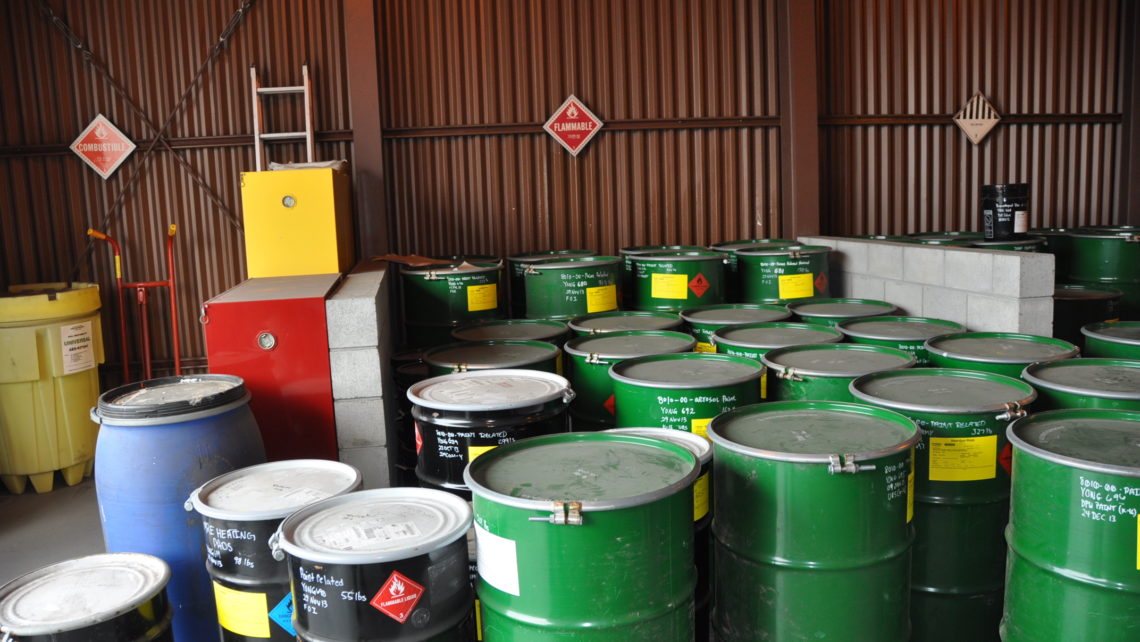Hazardous Waste Definitions: A Cheat Sheet for Common Terms and Acronyms
What does that hazardous waste term mean? We’ve rounded up hazardous waste definitions for some of the industry’s most common terms and acronyms.
By Cory Sander
There are many terms associated with hazardous waste and some even have three or four letter abbreviations. It’s easy to find yourself thinking, “What does that stand for again? Or what does that hazardous waste term mean?”
We’ve compiled some of the most common terminology along with brief definitions. This list spans everything from waste types to waste generator categories. Think of it as a quick cheat sheet for environmental, health, and safety professionals.
Acutely Hazardous Waste
Waste with the potential for a brief and severe affect as opposed to a chronic one. Acutely hazardous waste comes with lower threshold quantities for generators. A generator, for example, who suddenly starts accumulating acutely hazardous waste could become a large quantity generator at a much lower overall quantity than if they were only accumulating hazardous waste. Each generator category comes with additional regulatory requirements
Biennial Report
A report submitted by large quantity generators (typically during odd numbered years). It provides EPA and states the quantities of hazardous waste generated and the movements of those hazardous wastes.
CESQG
Conditionally exempt small quantity generator. A facility or organization that generates no more than 100 kilograms of hazardous waste in a month. Must have less than 1,000 kilograms of hazardous waste on site at any time. CESQGs have minimal regulatory requirements. In particular, assuming they meet the quantity thresholds, there’s no time limit for shipping the hazardous waste off-site.
Characteristic Waste
Waste that is considered hazardous because it exhibits any of four different properties: ignitability, corrosivity, reactivity, and toxicity.
Container
Something that holds waste. These vary widely in size and type, but the most common are 55-gallon drums, roll-off dumpsters and tote tanks.
Corrosivity
The characteristic which identifies hazardous wastes that are acidic or alkaline (basic) and can readily corrode or dissolve flesh, metal, or other materials.
Excluded Waste
A category of waste that’s excluded from certain hazardous waste requirements. One example is recycled scrap metals. Some scrap metals may have chromium (hazardous), but, with the excluded waste category, recycling is encouraged.
Flash Point
The lowest temperature at which vapors of a material will ignite, when given an ignition source. For example, an open-top container of gasoline on a cold day would still produce ignitable vapors because it has a very low flash point.
Hazardous Waste
A regulated subset of waste that can pose a substantial or potential hazard to human health or the environment when improperly managed. Possesses at least one of four characteristics (ignitability, corrosivity, reactivity, or toxicity), or appears on special EPA lists.
Ignitability
The characteristic which identifies hazardous wastes that can readily catch fire and sustain combustion.
Listed Waste
A hazardous waste considered hazardous because it meets specific listing descriptions and the danger it presents is considered self-evident.
LQG
Large quantity generator. A facility or organization that generates more than 1,000 kilograms of hazardous waste or 1 kilogram of acutely hazardous waste in any month. LQGs are typically considered to be heavily regulated. Among other things, they can typically accumulate hazardous waste on site for no more than 90 days.
Reactivity
The characteristic which identifies hazardous wastes that readily explode or undergo violent reactions.
Spent Materials
Any used material that can no longer serve its original purpose without undergoing processing, such as regeneration or reclamation. Examples include spent catalysts, spent solvents and spent acids.
SQG
Small quantity generator. Any facility or organization that generates greater than 100 kilograms and less than (or equal to) 1,000 kilograms of hazardous waste in a calendar month. May typically accumulate hazardous waste on site for up to 180 days.
Toxicity
The characteristic which identifies hazardous wastes that are likely to leach dangerous concentrations of toxic chemicals into groundwater.
Universal Waste
Commonly recycled wastes with special management provisions intended to facilitate recycling. There are four categories of universal wastes: hazardous waste batteries, hazardous waste pesticides that have been recalled or collected in waste pesticide collection programs, hazardous waste lamps, and hazardous waste mercury-containing equipment.
Waste
In general, a waste is a material that a generator (business or organization) doesn’t want or isn’t going to use.
Waste Stream
In general industry terminology, it can sometimes be used interchangeably with Waste. Also, a reference to the general flow of a type of waste—or a combination of several wastes—from a facility or organization all the way through to recycling or disposal. One facility, for example, might produce a scrap metal waste stream and a used oil waste stream.
See more posts in this series:
Wastewater Definitions: A Cheat Sheet for Common Terms and Acronyms
Air Quality Definitions: A Cheat Sheet for Common Terms and Acronyms
EHS Safety Definitions: A Cheat Sheet for Common Terms and Acronyms
